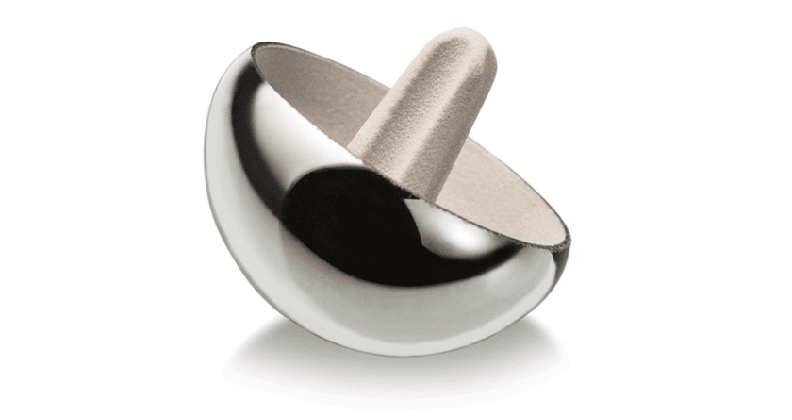
LRE Systems Ltd has launched an elbow resurfacing technology with the primary focus of realigning the elbow’s natural anatomy for full functionality restoration. The U.K.-based company has been refining the technology for more than 15 years, and is now launching it internationally.
The LRE (Lateral Resurfacing Elbow) System started its journey to market in the mid-1990s. orthopedic surgeon Joseph Pooley, M.D., F.R.C.S., designed the instrumented Bone Preserving (iBP) implant, then considered the answer to total elbow replacement. As iBP fell short of the intended results, Dr. Pooley’s focus shifted to pursuing a solution that would restore the elbow’s original anatomy and functionality.
Dr. Pooley’s research identified that the lateral side of the elbow was typically the problem rather than the medial side, which is what total elbow implants replaced. He determined that effectively realigning the lateral side of the elbow would take the strain off the medial side, allowing the joint to regain its functionality.
In the early 2000s, Dr. Pooley developed a technology based on removing the minimal amount of bone possible by resurfacing the radiocapitellar joint with a coating on the outside of the bone, and then shaping it into place. He developed the solution to be inlaid into the existing radial head to preserve the joint’s bone.
“At the time, that was the key to this product because retaining the natural anatomy and the three joints of the elbow provides the basis for the realignment of the joint and the long-term results that we’ve seen from the LRE,” said David Laskow-Pooley, Director and Co-founder of LRE Systems and Dr. Pooley’s brother.
Testing A More Functionally-Friendly Solution
With traditional elbow replacements, orthopedic surgeons remove the radial head and put in a replacement that destroys the proximal radioulnar joint, the stabilizer of the elbow. Dr. Pooley’s technology keeps the joint intact by inlaying into the natural radial head. By resurfacing the natural compartment, the elbow is aligned and anatomical movement is restored.
The second part of the equation is having different diameters for the capitellum and the radial head that allows the elbow to twist, turn, slip and slide above the joint.
Patients are restricted to lifting only a few pounds after a total elbow replacement, whereas with the resurfacing and maintained radial head, natural anatomical movement and ability are essentially restored.
By 2012, publications showed positive results in trials using the technique. In late 2017, Dr. Pooley and Laskow-Pooley joined forces to form LRE Systems. In 2018, The Bone & Joint Journal published long-term results showing zero revisions using the technique over an extended period.

With traditional elbow replacements, orthopedic surgeons remove the radial head and put in a replacement that destroys the proximal radioulnar joint. The LRE System keeps the joint intact by inlaying into the natural radial head. By resurfacing the natural compartment, the elbow is aligned and anatomical movement is restored.
Promising Results
More results have been published in industry journals and discussed at international conferences and meetings in the subsequent years. Today, data from 10 to 15 years of trials is available in peer-reviewed journals and shows zero revisions using the technology.
The LRE System’s mass commercialization has taken a decade and a half to roll out due to the extensive research and testing that went into ensuring the success of inlaying into the native radial head.
Laskow-Pooley sees broad application for the LRE System, including a large population of patients who are misdiagnosed with tennis elbow.
“If symptoms last longer than six months, it’s probably not tennis elbow,” he said. “It’s likely caused by deterioration of cartilage in the lateral compartment.”
Typically, the treatment for tennis elbow starts with painkillers and limited activity followed by steroidal injections and a total elbow replacement as a last resort.
“Because LRE is simple and relatively non-invasive, we believe it can provide a long-term solution that doesn’t prevent further treatment,” Laskow-Pooley said. “For example, should the patient ultimately need a total elbow replacement, the native anatomy remains largely intact; all we’ve done is put a cap on the capitellum and inlaid on the native radial head.”
The LRE is positioned as the treatment of choice for primary or secondary osteoarthritis caused by loss of cartilage. Because of the ease of operation, it’s an outpatient procedure ideally suited for ASCs. Furthermore, LRE uses preoperative planning software based on an x-ray, and the system is packaged as a single-use, sterile implant and instrument set.
Ramping Up the Launch
LRE originally planned to launch in 2020, but the COVID-19 pandemic hit just days before commercialization and the U.K. went into lockdown. Elective procedures ceased and only recently have begun to return en masse.
The company partnered with Orthopedic Consulting Group (OCG) to provide commercialization expertise and support. LRE obtained its CE Mark and is currently sold in the U.K. and Europe. It will launch in new markets before the end of the year.
“Now we need to accelerate our growth, and this is where OCG is helping us,” Laskow-Pooley said. “They are acting as our partners and we are embedded with them in the regulatory marketing, legal functions and distribution and operations. They’re also looking at us as an investment. We want to accelerate into the other markets, because there’s a pull.”
The demand from international markets has been substantial, with surgeons in the U.S., Canada and elsewhere requesting the LRE System.
“Investment at the moment is going to help LRE grow substantially,” said Suzanna Everard, Group Director of OCG. “That’s where we are at the moment — finding that investment to make sure we can build up the inventory, make sure we have everything needed to supply the demand, because we know it’s there.”
OCG and LRE are executing a strategic, focused approach to commercialization on a global level. They are in the process of obtaining their 510(k), with commercialization in the U.S. expected this year.
HT
Heather Tunstall is a BONEZONE Contributor.




